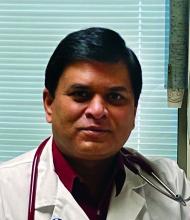Models may inform shared decision-making
The development of new prediction models is important, because cardiovascular disease is the leading cause of death among U.S. adults and preventing CVD is a major public health challenge, lead author Dr. Bundy said in an interview.
“In an effort to prevent CVD, risk prediction equations can help identify patients who are at high risk for developing CVD and who may benefit from initiation or intensification of preventive and/or therapeutic measures. Simultaneously, chronic kidney disease is prevalent and those with CKD are often considered at high risk for CVD,” he said.
“However, common risk prediction tools were developed for the general population and may not work as well in patients with CKD, who may have different risk factors. Improving risk prediction in patients with CKD may help identify those among this growing population who are truly at high risk, as well as identify those who are at low risk and less likely to benefit from invasive procedures,” Dr. Bundy explained.
Glomerular filtration rate was not a strong predictor of atherosclerotic CVD
“One of the surprising findings was that estimated glomerular filtration rate was not a strong predictor and was not included in our final models,” Dr. Bundy said.
“We know that eGFR is a very important measurement in this population, but our results suggest that, at least in our sample, urinary albumin-to-creatinine ratio and cardiac biomarkers like troponin T and NT-proBNP are stronger predictors of atherosclerotic CVD in a population with reduced kidney function,” he said.
“Patient characteristics like age, blood pressure, and cholesterol are used by health care providers to predict whether a person will have a heart attack or stroke. However, most currently available prediction tools were not made for use in patients with CKD, which is a condition that is becoming more common and is likely to be seen by more health care providers in family practice,” said Dr. Bundy. “These people with CKD may have different risk factors for heart disease.”
Models are useful for clinical practice
“We are seeing rising numbers of patients with CKD in the population because of increasing age, rising rates of diabetes, and hypertension,” Noel Deep, MD, said in an interview. “The current practice of medicine does not have CKD-specific prediction models for ASCVD development, and current risks are calculated based on prediction models developed for the general population.”
“Having a prediction model that incorporates criteria/variables associated with CKD improves our ability to accurately identify and address the risk of ASCVD in this particular patient population,” said Dr. Deep, who is a general internist in a multispecialty group practice with Aspirus Antigo (Wisc.) Clinic and the chief medical officer and a staff physician at Aspirus Langlade Hospital, also in Antigo.
“We always knew that CKD does place the individual at higher risk for developing ASCVD, but I was impressed by the significant improvement in the prediction models using CKD specific tools, such as cardiac biomarkers (NT-proBNP), intensity of diabetes control (A1c), tobacco use, urinary albuminuria, in addition to advancing age,” he said. “Many of the laboratory tests listed in this study are commonly available and can be easily incorporated into our evaluation for and management of ASCVD in our patients with CKD.”
“As a practicing primary care physician, I would say that this study emphasizes the importance of identifying and working toward mitigating the associated health risks that our patients with CKD might have coexisting and that significantly contribute to progression of CKD,” said Dr. Deep, who is also assistant clinical professor at the Medical College of Wisconsin, Wausau. “By addressing these risk factors, we can positively impact the health of our patients with CKD and decrease the morbidity and mortality, and health care costs. These predictive models can hopefully help us more accurately identify the risk of ASCVD thereby decreasing unnecessary diagnostic procedures and interventions which carry their own risks and morbidity.”
Looking ahead, “these predictive models should be assessed and validated in large studies in diverse populations and those with different risk factors for ASCVD because CKD can be caused by several different medical conditions each with potential to contribute to ASCVD,” Dr. Deep added.


